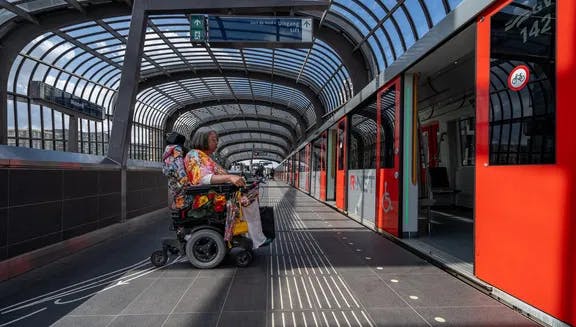
Accessible transport from Amsterdam Airport Schiphol
28 January 2025
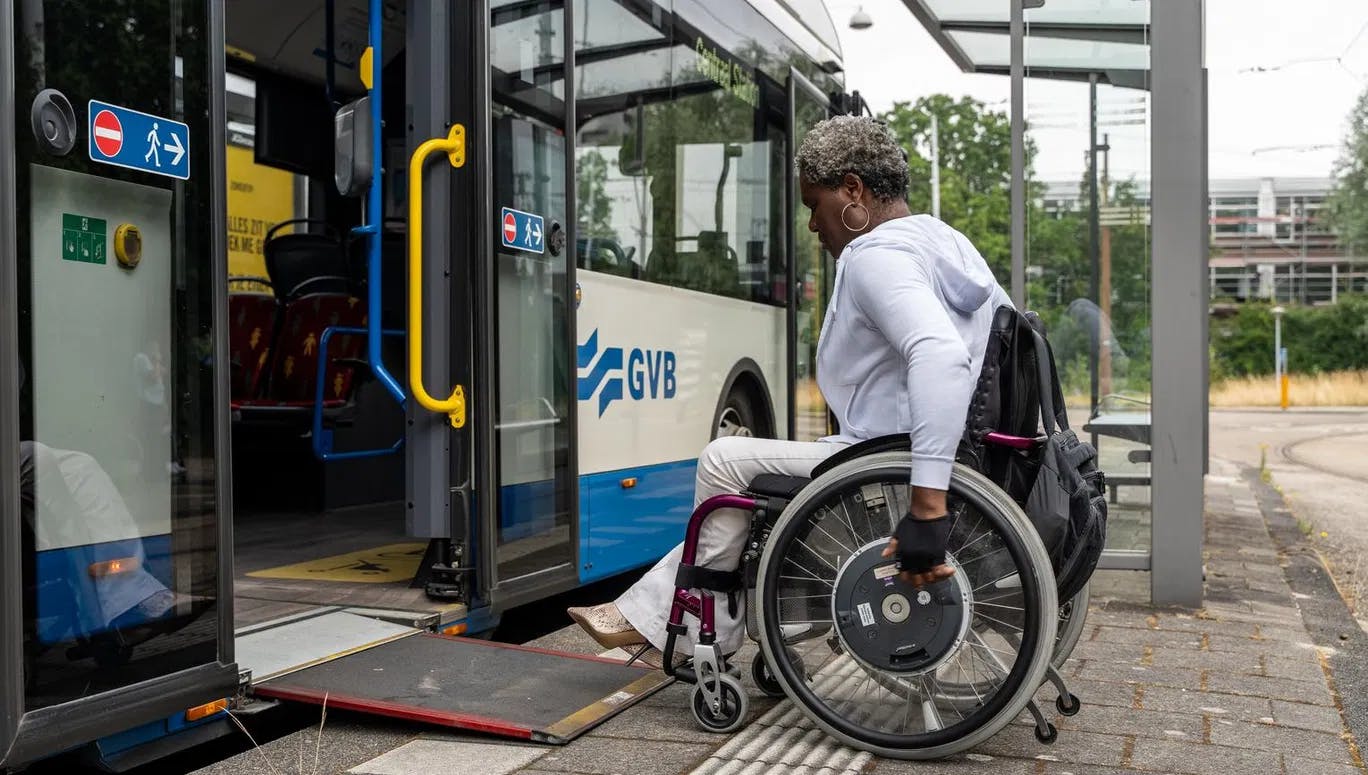
In Amsterdam, you can travel with a limited use ticket or a reloadable OV-chip card. Tickets can be purchased online or at GVB ticket machines. You can also travel using the OVpay system on trams, metros, buses and trains. Tap your contactless debit card, credit card, mobile phone or smartwatch to pay as you go.
You must always tap your travel or payment card to check in and check out whenever you enter and exit trains, trams, buses and metros.
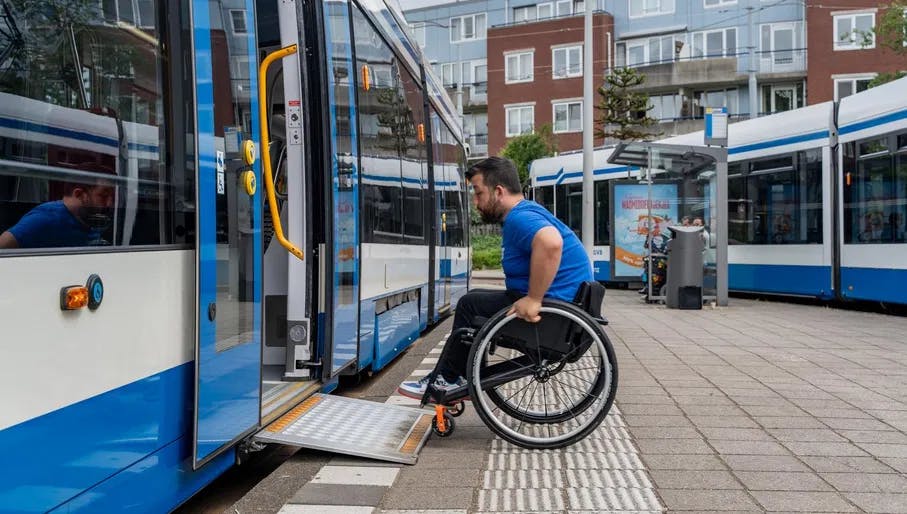
All trams in Amsterdam have designated wheelchair space and priority seating. Newer tram models have wide wheelchair accessible doors and levelled entry to the tram carriage, marked with a wheelchair sign on the door. Older models have steps to enter, with one low entrance in the middle of the vehicle. Old tram models do not provide wheelchair ramps, while conductors on newer trams can provide foldable ramps in case of wide gaps.
Electric mobility scooters are allowed on trams, at a maximum 120 cm length; 70 cm width; 109 cm height.
Note: Many tram stops in the city have levelled platforms for accessible entry, while other stops have partially raised platforms or high gaps that make entry with power wheelchairs challenging. Tram stops deemed wheelchair accessible by GVB are marked on route planners and on screens inside the tram, but do not include information on gaps.
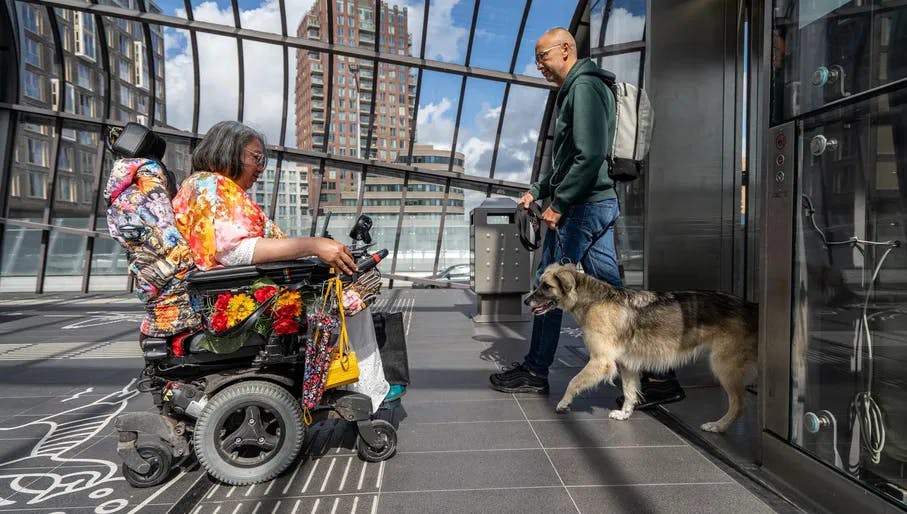
All metro stations in Amsterdam are marked as wheelchair accessible with lifts, ramps and wide fare gates. Metro carriages have designated wheelchair space and priority seating. The city’s metro system uses different metro models of which the newer “M5” model is the most physically accessible with a short gap between the platform and metro carriage. Major metro stations like Amsterdam Central Station have onsite staff who can assist with bridging wider gaps. Smaller stations are not regularly staffed.
Electric mobility scooters are allowed on metros, with a maximum length of 120 cm, a width of 70 cm, and a height of 109 cm.
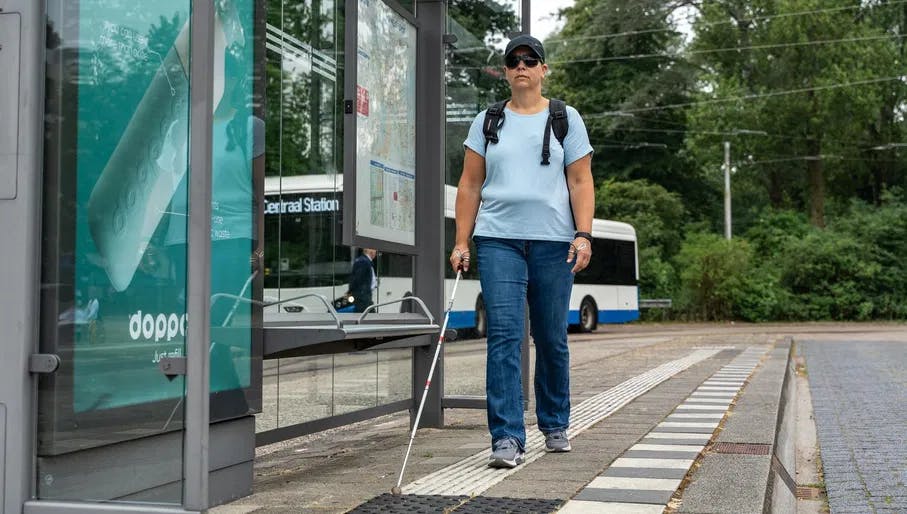
Buses in Amsterdam have a low floor area designated for wheelchair users in the middle of the bus with fold-out wheelchair ramps that can be fitted by drivers for accessible entry and exit. Wheelchairs and walking cycles that are max. 170 cm long, 70 cm wide and 109 cm tall are allowed on buses. Electric mobility scooters are not permitted on buses.
Across the city, 62 bus stops have been made accessible to visually impaired travellers. Guidelines and pedestrian crossings have been installed, and unnecessary obstacles have been removed. For the whole list of accessible bus stops, see the municipality's website (in Dutch).
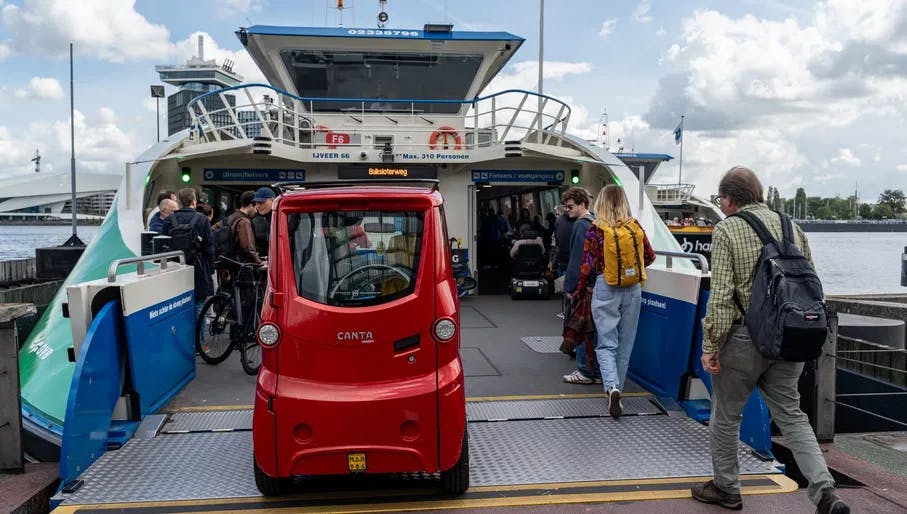
Amsterdam’s ferries provide free connections from Central Station to all passengers across the IJ River towards Amsterdam Noord. Wait times are short, with frequent ferry service across the water. Ferries have wide ramps used by all passengers for easy boarding on and off the boat. Wheelchairs, mobility aids and scooters are all permitted on ferries.
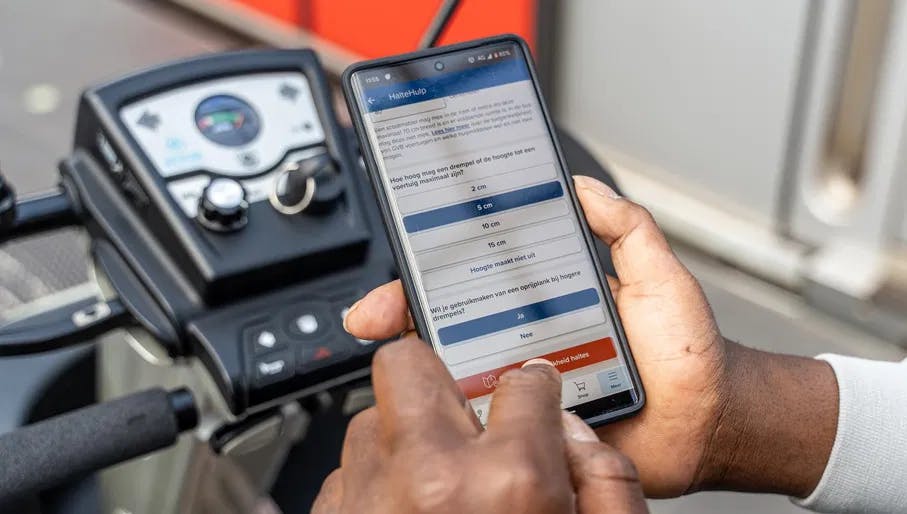
When searching for travel advice in the GVB Travel App, it is possible to select the option “Accessible Journey” and “Less walking” to reduce walking distance or plan routes with accessible vehicles and stops. You can also check for accessible stops on the GVB Routes and Schedules website. A filled in grey circle means the stop is marked as wheelchair accessible.
You can also switch on the Virtual Stop Assistance in the app to plan your trip to fit your situation. The stop you want to use will then be assessed based on your personal settings and will give you a score from very good to inaccessible.
Download the GVB Travel App